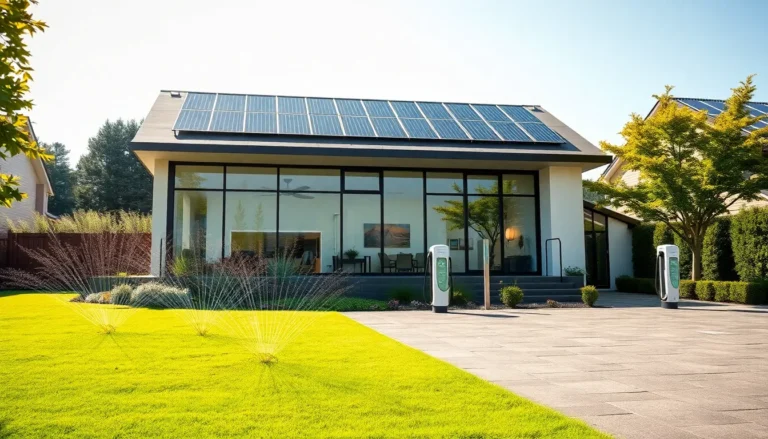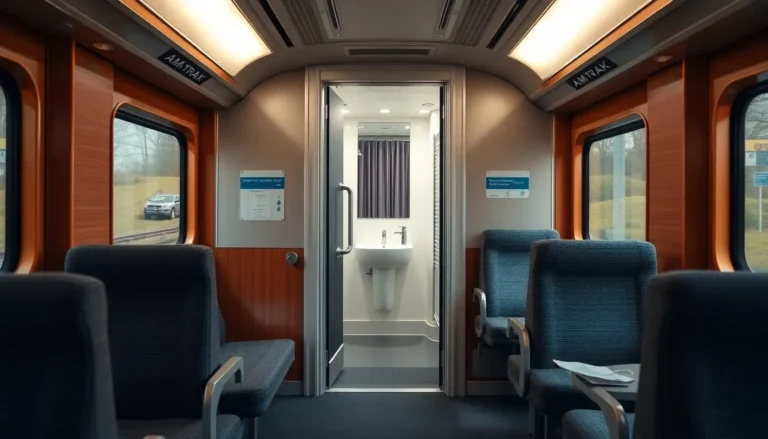Imagine walking into your home and feeling like a superhero in a world designed just for you. Accessible home remodeling isn’t just about ramps and grab bars; it’s about transforming spaces into havens of comfort and style. Whether it’s a chic kitchen that’s easy to navigate or a bathroom that feels like a spa retreat, accessibility can be both functional and fabulous.
Table of Contents
ToggleUnderstanding Accessible Home Remodeling
Accessible home remodeling involves creating spaces that cater to individuals with diverse needs. Comfort, practicality, and style evoke a harmonious atmosphere in an accessible home.
Definition and Importance
Accessible home remodeling refers to modifications that enhance usability for everyone, especially those with disabilities. Importance lies in fostering independence and improving quality of life. These changes enable occupants to navigate their environment confidently, reducing barriers in daily activities. Statistics show that approximately 1 in 4 adults in the U.S. live with a disability. Accessibility promotes inclusivity, allowing people to enjoy their homes fully.
Key Principles of Accessibility
Designing for accessibility requires adherence to specific principles. First, consider universal design, which ensures environments accommodate everyone, regardless of age or ability. Incorporating sufficient space allows ease of movement for wheelchairs and walkers. Features such as lever-style door handles and non-slip flooring enhance safety. Additionally, installing adjustable countertops fosters independence while cooking or performing tasks. Prioritizing thoughtful design caters to a wide range of needs, creating beautiful and functional living spaces.
Benefits of Accessible Home Remodeling

Accessible home remodeling offers numerous advantages, enhancing both comfort and functionality in everyday living. The modifications create environments that cater to diverse needs, ensuring safety and enjoyment for all residents.
Enhanced Safety and Independence
Improved safety serves as a primary benefit of accessible home remodeling. Features like grab bars and non-slip flooring significantly reduce the risk of falls, especially for individuals with mobility challenges. Wider hallways and doorways enable easier navigation with mobility aids, promoting independence. Accessibility adjustments foster confidence in daily routines, empowering residents to perform tasks without assistance. The design of user-friendly spaces eliminates barriers, allowing everyone to engage freely in their homes.
Increased Property Value
Accessible home renovations contribute to increased property value. Buyers appreciate homes equipped with features accommodating various needs, fostering a competitive edge in the real estate market. Studies indicate that homes with accessible modifications attract a larger pool of potential buyers, ensuring long-term investments. Custom upgrades often appeal to aging populations seeking comfort and usability. Enhancements like adjustable countertops and accessible bathrooms become desirable amenities, setting properties apart while ensuring their marketability.
Key Features of Accessible Home Remodeling
Accessible home remodeling incorporates several design features that promote usability and comfort for individuals of all abilities. Prioritizing functionality, these features create inviting and practical living spaces.
Wider Doorways and Hallways
Wider doorways and hallways enhance movement within the home. They accommodate wheelchairs and walkers, ensuring easy navigation through all areas. A minimum width of 32 inches for doorways promotes accessibility. Hallways should ideally measure at least 36 inches wide to provide ample space for maneuvering. This design consideration significantly increases the home’s overall accessibility.
Accessible Kitchen and Bathroom Designs
Accessible kitchen and bathroom designs focus on usability and safety. Installing lower countertops helps individuals reach appliances and surfaces effortlessly. Adjustable-height sinks and flexible storage solutions enhance convenience. In bathrooms, features like walk-in showers and grab bars ensure safety during daily routines. Non-slip flooring surfaces further reduce the risk of falls. Thoughtful layouts create an environment where everyone can enjoy these essential spaces.
Smart Home Technology Integration
Smart home technology integration permits easier control of various home functions. Automated lighting, thermostats, and voice-activated assistants significantly improve daily living experiences. These technologies allow users to adjust their environment without physical strain. Implementing smart locks enhances security and convenience. Integrating technology promotes independence, ensuring that homes cater effectively to individual needs.
Planning Your Accessible Home Remodel
Accessible home remodeling requires careful planning to meet specific needs and preferences. Understanding individual requirements forms the foundation for any successful renovation.
Assessing Your Needs
Evaluating personal needs serves as the first step in the remodeling process. Identifying mobility challenges helps narrow down which features are essential. Consideration of daily activities highlights areas where improvements can enhance comfort and usability. Gathering feedback from family members and caretakers provides additional insights. Review existing layouts and determine their limitations, focusing on areas that matter most. Think about future needs to ensure long-term functionality.
Working with Professionals
Engaging professionals simplifies the remodeling journey significantly. Architects and designers specializing in accessible renovations bring valuable insights to the process. Collaboration with certified contractors ensures compliance with local building codes. Professionals can recommend effective solutions tailored to individual requirements. Discussing budget constraints early on helps establish realistic expectations. Seek out specialists who demonstrate experience in universal design principles. Prioritizing professionals with a solid track record guarantees quality results that blend accessibility with style.
Accessible home remodeling is a vital step towards creating inclusive living spaces that cater to diverse needs. By prioritizing both functionality and aesthetics, homeowners can transform their environments into safe and stylish havens. These thoughtful modifications not only enhance daily living but also promote independence and confidence for individuals with mobility challenges.
Investing in accessible renovations offers long-term benefits, including increased property value and broader market appeal. With the right planning and professional guidance, anyone can achieve a beautifully designed home that accommodates all ages and abilities. Embracing accessibility is not just a trend; it’s a commitment to fostering a supportive and welcoming community for everyone.


